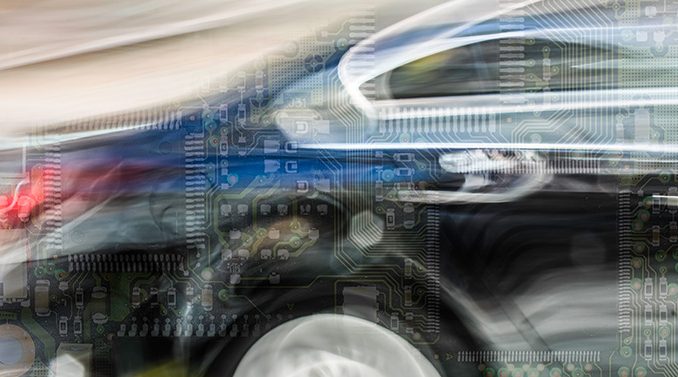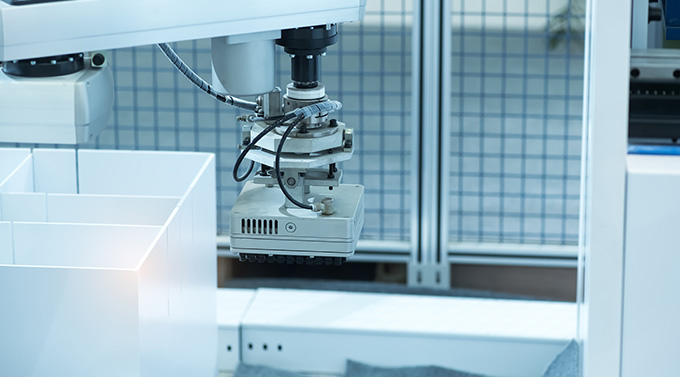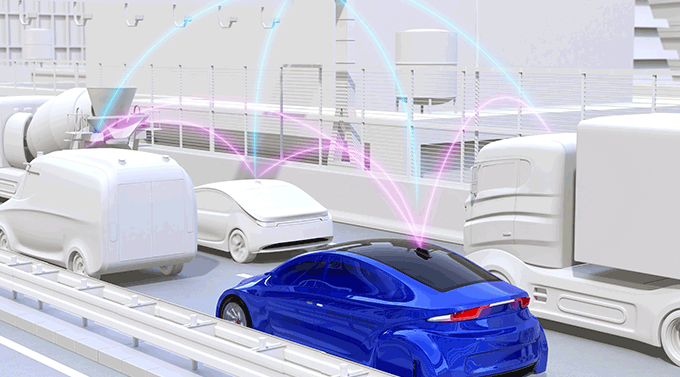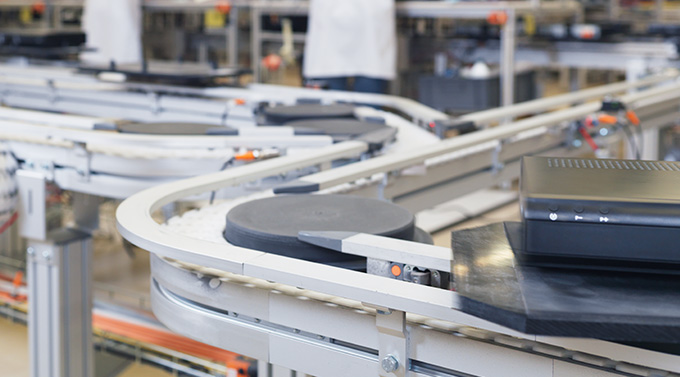
The automotive industry is changing with a clear transition from combustion engines to electrical engines. As the automotive industry has developed over the years, so has the industry’s use of automated production flow solutions. This is the second and last part in my article series about the automotive industry, where I will describe how connected production flow solutions contribute to a more efficient automotive industry.
Knowledge about the production process enables preventive maintenance
 As the automotive industry has developed over the years, so has the industry’s use of automated production flow solutions. The industry started out with quite traditional mechanical production solutions. However, production flow solutions now move more towards mechatronics with a higher focus on the control of the production line as well as more software functions. That has lead to trends such as IIoT (Industrial Internet of Things) are becoming both more important and common in the automotive industry. Connected production flow solutions bring smart functions that reveal how the production equipment is doing, enabling the manufacturer to learn more about the production process. It also makes it easier for the manufacturer to anticipate future production events and apply preventive maintenance on the automated production flow solutions in order to minimize production stops.
As the automotive industry has developed over the years, so has the industry’s use of automated production flow solutions. The industry started out with quite traditional mechanical production solutions. However, production flow solutions now move more towards mechatronics with a higher focus on the control of the production line as well as more software functions. That has lead to trends such as IIoT (Industrial Internet of Things) are becoming both more important and common in the automotive industry. Connected production flow solutions bring smart functions that reveal how the production equipment is doing, enabling the manufacturer to learn more about the production process. It also makes it easier for the manufacturer to anticipate future production events and apply preventive maintenance on the automated production flow solutions in order to minimize production stops.
Connected production flow solutions also enable the manufacturer to adapt the production equipment to different situations and circumstances, such as the number of available staff, how the machines are performing, what material is being used and what type of orders you have. As long as the production information is available, the imagination is the only thing putting a stop to what you can achieve with your production.
Traceability can lead to cost savings in the automotive industry
 A difference between the automotive industry and other manufacturing industries, such as FMCG (fast moving consumer goods), is that the production speed is much lower in the automotive industry. Depending on the process, the cycle time in the automotive industry can extend up to a few minutes, compared to other industries that can have a cycle time of less than a second. Therefore, the connected production flow solution must be adapted to the specific requirements in the automotive industry. In order to secure the production quality, traceability is an important factor in the automotive industry. If a car manufacturer encounters problems with for example an airbag, a lot of cars risk being recalled if the fault can’t be traced back to its origin. This could be extremely expensive and lead to devastating consequences for the brand. The production information coming from connected production flow solutions facilitates the process of securing a high-quality production with a high level of traceability.
A difference between the automotive industry and other manufacturing industries, such as FMCG (fast moving consumer goods), is that the production speed is much lower in the automotive industry. Depending on the process, the cycle time in the automotive industry can extend up to a few minutes, compared to other industries that can have a cycle time of less than a second. Therefore, the connected production flow solution must be adapted to the specific requirements in the automotive industry. In order to secure the production quality, traceability is an important factor in the automotive industry. If a car manufacturer encounters problems with for example an airbag, a lot of cars risk being recalled if the fault can’t be traced back to its origin. This could be extremely expensive and lead to devastating consequences for the brand. The production information coming from connected production flow solutions facilitates the process of securing a high-quality production with a high level of traceability.
Avoid bottlenecks with a balanced production line
 When choosing the right production flow solution for the automotive industry, there are several factors that need to be taken into consideration. In order to balance the production line and avoid bottlenecks, the production machines and their operations are carefully evaluated. Are paletts required or should the products be placed directly on the conveyor track? How should the machines be placed in the factory plant in order to facilitate the product flow and ensure the desired accessibility and productivity? What type of information does the manufacturer want out of the systems, products and processes? These are just a few of the questions that need to be answered.
When choosing the right production flow solution for the automotive industry, there are several factors that need to be taken into consideration. In order to balance the production line and avoid bottlenecks, the production machines and their operations are carefully evaluated. Are paletts required or should the products be placed directly on the conveyor track? How should the machines be placed in the factory plant in order to facilitate the product flow and ensure the desired accessibility and productivity? What type of information does the manufacturer want out of the systems, products and processes? These are just a few of the questions that need to be answered.
Flexible automated production flow solutions for the automotive industry
We, at FlexLink, have many years of experience in designing smart and connected production flow solutions that are energy efficient, space efficient and flexible. All our production flow solutions are adapted to our customer’s needs and our service organization makes us accessible whenever and wherever we are needed. We look forward to following the development in the automotive industry and supply the industry with high-quality automated production flow solutions that can take on all the challenges the automotive industry has in store for them.
This was the second and last blog article in my article series about the automotive industry. Don’t forget to read “The automotive industry requires stable production lines”, which is the first part in my article series. Would you like to know more about the automotive industry and the other industries we work with? Feel free to visit our website or contact me with any questions. Also, you are welcome to like, share and comment on the article in our social media channels.




Leave a Reply